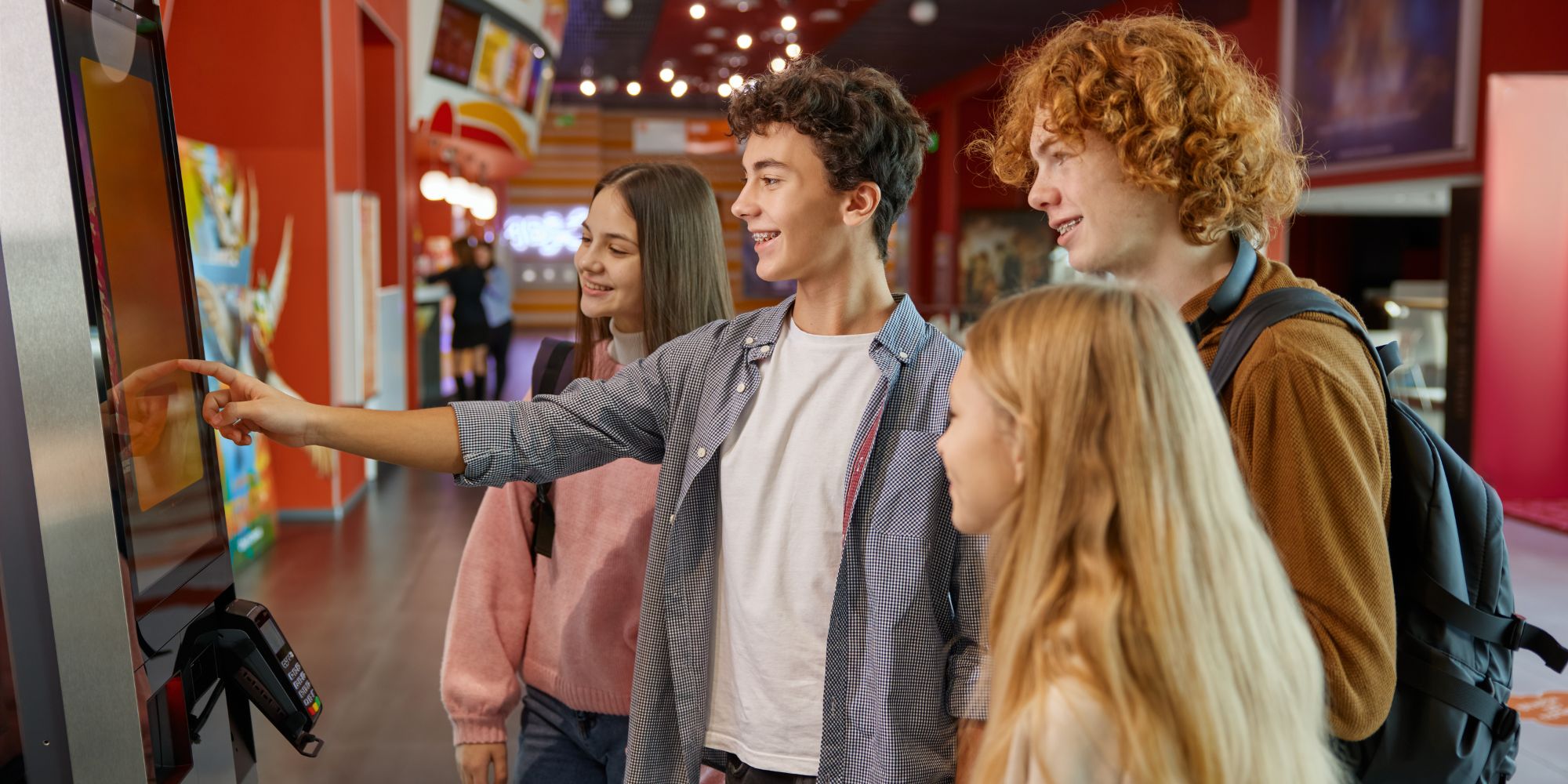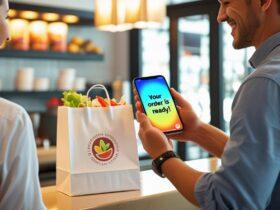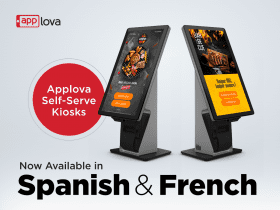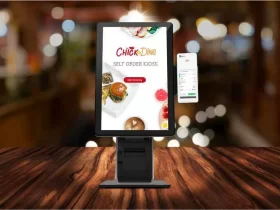As a restaurant owner, you’re constantly looking for ways to improve customer service, increase efficiency, and ultimately boost sales. One innovation that’s been making waves in the fast food industry is the self-ordering kiosk, particularly those found in McDonald’s restaurants. The success of McDonald kiosks can serve as an inspiration and a practical example for any restaurant aiming to modernize its service model. But what exactly makes McDonald’s self-ordering kiosks so popular, and how can you leverage this technology in your establishment?
Let’s delve into the reasons behind the popularity of McDonald’s Kiosks and the benefits they bring.
1. Enhancing Customer Experience with Convenience
McDonald’s kiosks, often called McDonald’s ordering machines or touch screen ordering systems, provide an unmatched level of convenience for customers. These kiosks enable customers to place their own orders, reducing wait times and making the ordering process more efficient. Customers no longer have to wait in line or feel rushed to make their decisions at the counter. Instead, they can take their time, browse the menu, and customize their orders exactly how they want. This convenience is especially attractive in the fast food industry, where quick service and efficiency are crucial.
2. Increasing Order Accuracy with McDonald kiosk
One of the significant advantages of McDonald’s self-order kiosks is the improvement in order accuracy. When customers input their orders directly into the system, the chances of miscommunication between the customer and the cashier are eliminated. This reduction in errors leads to higher customer satisfaction, as customers receive exactly what they ordered. For restaurant owners, this translates to fewer order returns and remakes, saving both time and resources.
Must Read: Are Self-Ordering Kiosks the Future of Fast Food?
3. Boosting Sales with Upselling Opportunities
McDonald’s self-service kiosks are programmed to suggest add-ons and upsells during the ordering process. For example, when a customer orders a burger, the kiosk might suggest adding fries or a drink to their meal. These prompts are subtle yet effective, often leading to increased average order values. This strategy is highly beneficial for restaurants, as it not only enhances the customer’s meal but also boosts revenue.
4. Enhancing Operational Efficiency
The implementation of McDonald’s kiosk machines has also led to significant improvements in operational efficiency. With kiosks handling a portion of the ordering process, employees can focus more on food preparation and customer service. This redistribution of labor helps in managing busy periods more effectively and ensures that customers receive their orders promptly. Additionally, the data collected from the kiosks can provide valuable insights into customer preferences and peak ordering times, allowing for better staff scheduling and inventory management.
5. Catering to Modern Consumer Preferences
Today’s consumers are increasingly tech-savvy and accustomed to using digital interfaces in their daily lives. McDonald’s self-checkout kiosks cater to this demographic by offering a familiar and user-friendly ordering experience. The touch screen interface is intuitive and easy to navigate, making it accessible to customers of all ages. This modern approach not only meets customer expectations but also positions McDonald’s as a forward-thinking and innovative brand.
6. Reducing Labor Costs
While the initial investment in McDonald’s kiosk machines may be significant, the long-term benefits can lead to substantial cost savings. By automating the ordering process, restaurants can reduce their reliance on front-of-house staff. This doesn’t necessarily mean cutting jobs, but rather reallocating staff to more critical areas of the business, such as food preparation and customer engagement. Over time, the reduction in labor costs can offset the initial expenditure on kiosks.
7. Enhancing Menu Transparency and Customization
One of the standout features of McDonald’s self-order kiosks is the ability to provide detailed menu information. Customers can view nutritional information, ingredients, and customization options at their own pace. This transparency helps customers make informed choices and tailor their meals to their preferences or dietary needs. For example, someone looking to avoid gluten or reduce calorie intake can easily modify their order accordingly. This level of customization enhances the customer experience and encourages repeat visits.
8. Improving the Dining Environment
By reducing the number of customers queuing at the counter, McDonald’s kiosks contribute to a more pleasant dining environment. The streamlined process minimizes congestion and noise, creating a more relaxed atmosphere for dine-in customers. This improvement in the overall ambiance can enhance customer satisfaction and encourage longer visits, leading to increased sales of items like desserts and beverages.
9. Facilitating a Contactless Experience with McDonald kiosk
In the wake of the COVID-19 pandemic, contactless services have become more important than ever. McDonald’s self-service kiosks support contactless payment options, allowing customers to complete their transactions without physical contact. This feature not only promotes health and safety but also aligns with evolving consumer preferences for touch-free interactions. As a restaurant owner, implementing similar technology can reassure customers about the safety of dining at your establishment.
Must Read: How Self-Serve Kiosks Help Combat Labor Shortages in Restaurants
10. Leveraging Data for Business Insights
The data collected from McDonald’s order screens provides valuable insights into customer behavior and preferences. By analyzing this data, McDonald’s can identify popular items, peak ordering times, and customer demographics. This information is invaluable for making informed business decisions, from menu adjustments to marketing strategies. For restaurant owners, leveraging data from self-ordering kiosks can lead to better-targeted promotions and a more efficient operation overall.
McDonald Kiosk Case Study
To illustrate the impact of self-ordering kiosks, let’s look at a case study from McDonald’s. In 2015, McDonald’s began rolling out self-order kiosks in various locations worldwide. The goal was to streamline operations and improve customer service. According to McDonald’s reports, the kiosks contributed to a significant increase in sales and customer satisfaction. Specifically, the average order value increased by 20-30%, thanks to effective upselling strategies embedded in the kiosk interface. Additionally, customer feedback highlighted the ease of use and reduced wait times as major benefits.
The case study also showed improvements in operational efficiency. With customers placing their own orders, staff could be reallocated to other critical tasks, enhancing the overall speed and quality of service. This transition also allowed McDonald’s to gather valuable data on customer preferences, enabling more targeted marketing efforts and menu adjustments.
McDonald’s Kiosk Payment Options
McDonald’s kiosks offer a variety of payment options to accommodate different customer preferences. Customers can pay using credit or debit cards directly at the kiosk, which is equipped with a secure card reader. For those who prefer digital payments, the kiosks also accept mobile payment options such as Apple Pay and Google Wallet. This flexibility in payment methods ensures a smooth and convenient transaction process for all customers.
Additionally, McDonald’s kiosks are integrated with their loyalty programs, allowing customers to earn and redeem points during their transactions. This integration encourages repeat visits and enhances customer loyalty. By providing multiple payment options, McDonald’s ensures that the self-ordering experience is as seamless and inclusive as possible.
Must Read: How Much Revenue Will Kiosks Generate for Your Restaurant?
Conclusion
The popularity of McDonald’s kiosks can be attributed to a combination of convenience, efficiency, and enhanced customer experience. These self ordering kiosks address many common pain points in the fast food industry, from long wait times to order inaccuracies. By embracing similar technology, restaurant owners can improve their service model, boost sales, and meet the evolving expectations of modern consumers. Investing in self-ordering kiosks is not just about keeping up with trends but about positioning your restaurant for long-term success in an increasingly digital world.












Leave a Reply